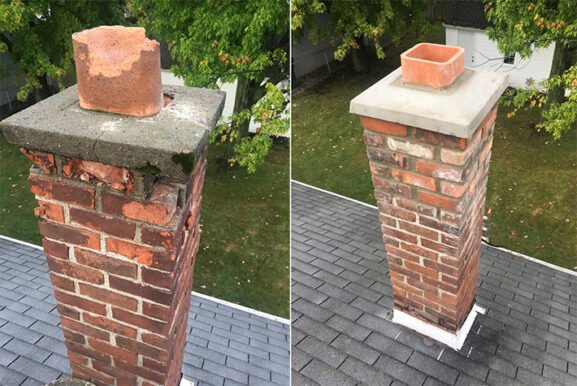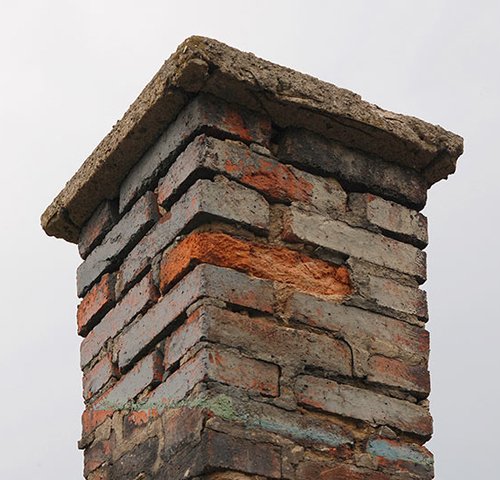Why Timely Chimney Fire Repair Matters for Long-Term Home Safety
Key Takeaways
- Chimney fires can cause severe structural damage that compromises home safety if left unaddressed.
- Repairing chimney fire damage promptly helps prevent costly future repairs and recurring fire hazards.
- Signs of past chimney fires include cracked flue tiles, warped metal components, and flaky creosote.
- Professional inspections and repair services are essential to restore safety and performance.
Understanding the Risks of Chimney Fires
A chimney fire isn’t always as obvious as flames shooting out of the top of your chimney. Many happen quietly and go unnoticed until damage has already occurred. These fires often start when creosote—a highly flammable substance that builds up from wood-burning—ignites inside the flue. According to the Chimney Safety Institute of America (CSIA), temperatures in chimney fires can exceed 2,000°F, which can crack tiles, warp metal liners, and damage masonry work.
What makes chimney fires especially dangerous is that they weaken the structure designed to contain high heat and toxic gases. Once compromised, your chimney can no longer safely vent smoke and fumes, putting your household at greater risk of future fires and carbon monoxide exposure.
Common Signs of Chimney Fire Damage
After a chimney fire—whether detected or not—several signs often point to underlying damage. Homeowners should keep an eye out for these indicators:
- Cracked or missing flue tiles
These tiles line the inside of your chimney and are crucial in containing heat. Damage to them often occurs due to intense heat from fires. - Puffy or blistered creosote
This unusual texture indicates that the creosote was exposed to high temperatures, a telltale sign of fire. - Damaged or warped metal chimney components
Heat from a fire can warp metal liners or chimney caps, leaving your system vulnerable to further damage. - Exterior masonry cracks or discolored chimney bricks
These changes on the outside often signal deeper internal issues.
Recognizing these symptoms early allows for timely chimney fire repair before problems grow more dangerous or costly.
The Role of a Certified Chimney Inspection
Before any repair can take place, the first critical step is a professional Level 2 chimney inspection. This includes a video scan of the interior flue and an evaluation of all accessible parts of the chimney system.
Certified inspectors follow standards set by organizations like the National Fire Protection Association (NFPA). They are trained to detect fire-related damage that the untrained eye might miss. Without this level of inspection, repairs might only address surface-level problems, allowing deeper issues to remain.
Inspections should be scheduled annually—even if no fire has occurred—to maintain safety and performance.
Steps Involved in Chimney Fire Repair
The scope of chimney fire repair depends on the extent and type of damage. Here’s a breakdown of what repairs may involve:
Flue Liner Replacement
If your flue tiles are cracked or missing, replacing the liner is critical. Stainless steel liners are a popular choice due to their durability and fire resistance. In some cases, relining with a cast-in-place or poured-in-place liner may also be effective.
Masonry Repair and Repointing
High heat can deteriorate mortar joints, causing structural weakness. Tuckpointing and brick replacement are common repair techniques to restore chimney integrity and prevent moisture intrusion.
Smoke Chamber Parging
The smoke chamber, located just above the firebox, is often a hidden victim of chimney fires. Repairing it typically involves parging—or smoothing—the chamber walls with a heat-resistant material to improve airflow and reduce fire risk.
Damper and Cap Repair
Fire damage may affect these important components. Replacing a warped damper or cracked chimney cap is necessary to keep water and debris out of your chimney.
These steps require specialized tools and knowledge, so it’s crucial to hire an experienced chimney technician to ensure repairs meet modern safety standards.
Why Delaying Repairs Can Cost You More
Neglecting chimney fire damage can lead to structural failure, recurring chimney fires, and serious safety concerns. A damaged flue liner, for example, may allow heat to escape into walls or attic spaces, increasing the risk of house fires. Compromised masonry can lead to water infiltration, causing mold, spalling bricks, and weakened support structures.
Over time, these issues become more expensive and harder to fix. Insurance companies may also deny claims if they determine that negligence played a role. Acting quickly helps protect your home and reduce long-term financial burdens.
Preventing Future Chimney Fires After Repairs
Once your chimney has been professionally repaired, it’s important to take proactive steps to prevent future fires:
- Burn only seasoned hardwoods
Green or wet wood produces more smoke, leading to faster creosote buildup. - Schedule regular cleanings
The CSIA recommends annual chimney sweeps to keep creosote levels in check. You can learn more from their official guidelines here. - Install a chimney cap with spark guard
This protects against debris entry and helps prevent sparks from exiting and igniting the roof or nearby structures. - Invest in a stainless steel liner
If you’ve had to replace your liner, upgrading to a durable material helps withstand higher heat levels over time.
Taking these steps significantly lowers the chances of another chimney fire and ensures your fireplace continues to provide safe, reliable warmth.
Rebuilding Trust in Your Chimney System
Restoring a fire-damaged chimney isn’t just about fixing visible cracks or replacing metal parts. It’s about rebuilding a critical safety system in your home. Whether your chimney fire was dramatic or went unnoticed until inspection, swift and thorough repair ensures it’s ready for safe use once again.
Homeowners who prioritize this type of repair demonstrate a commitment to safety, long-term property care, and peace of mind during cold seasons. Regular inspections and ongoing maintenance are your best defenses against future fire hazards.

